Trucks used to be affordable, practical things.
The new Ford Maverick resurrects that idea – and adds one more.
It is also easier on gas than most economy cars – none of them having a bed you can haul stuff in.
The Maverick is not a ‘70s spin-off of the Pinto/Mustang II – as the original Maverick was. This Maverick is a spin-off of the Escape, Ford’s compact crossover SUV.
It is also something else.
Because it’s a hybrid, it is capable of 42 MPG in city driving – and 33 on the highway. That averages out to nearly 38 MPG – which is some 15 MPG higher than the four cylinder (non-hybrid) version of the Ford Ranger, Ford’s next-in-line (and much longer) pick-up.
Which also starts at $25,500.
As opposed to starting at $19,995 for the Maverick.
That’s about $5,500 still in your pocket for gas – plus paying far less for gas, as you go.
Now, the Maverick – unlike the Ranger – isn’t a traditional truck in that it is not built around a rear-drive layout with 4WD and Low range gearing available. It is front-wheel-drive (with AWD available) and its body and frame are welded together, as opposed to the body being bolted to a heavy steel frame, as is usually the case with trucks. 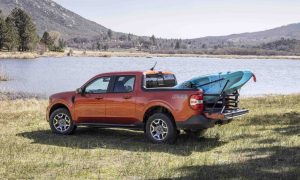
But It can still pull as much as 4,000 lbs. – and it’s as useful for hauling stuff around as the compact-sized pick-ups it’s meant to emulate and which are no longer available.
Next-in-line pickups like the Ranger are now mid-sized and bordering on full-sized, if you go by their length, which is on par with the length of half-ton trucks made up through the late 1990s/early 2000s.
If you want something less huge, less pricey – and a lot less thirsty – this thing is apt to appeal.
What’s New
The Maverick name goes back to the ‘70s but the Maverick pickup is a new model for Ford. 
What’s Good
As useful as the compact trucks you used to be able to buy.
More affordable than the compact trucks you used to be able to buy.
Much easier on gas than any truck you used to be able to buy.
What’s Not So Good
No two-door/regular cab version is available, so the only bed that’s available is less than five feet long.
No manual transmission is available.
4WD isn’t available.
The compact trucks you used to be able to get had a great weakness. They used nearly as much gas as full-sized trucks with V8 engines.
I know all about it because I have owned several small-but-thirsty pickups.
My current compact-sized truck is an ’02 Nissan Frontier. It has a little (2.4 liter) four cylinder engine that’s paired with a manual transmission. It gets 20 miles-per-gallon in the city and 23 on the highway. A same-year half-ton Chevy Silverado with a 5.3 liter V8 gets 13 city, 17 highway.
It’s not much of a difference – given the difference in displacement.
This Ford – which is about the same size overall as my ’02 Nissan – rates 42 in city driving and 33 on the highway. It is literally more than twice as fuel-efficient in city driving as my little truck and that is no small thing given that gasoline is now twice as expensive as it used to be, courtesy of Let’s Go Brandon!
Even on the highway, the new Ford goes ten miles farther down the road on a gallon of gas than my old Nissan. The overall/average difference is an astounding 17 MPG in favor of the new Ford. Which can also travel some 500 miles on just 13.8 gallons of gas.
How is possible – as Putin might put it?
Simple: By not burning as much gas. Sometimes, none. Literally.
The standard Maverick drivetrain is a hybrid drivetrain, consisting of a 2.5 liter gas engine paired with an electric motor/battery pack that – as in other hybrids – takes some of the load of propulsion off the gas engine, particularly when the Maverick isn’t moving. 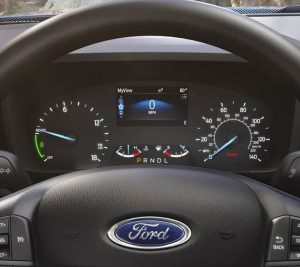
Or not much moving much.
The truck can trundle along for a bit without burning gas to do it – and powered accessories such as AC continue to run even when the engine is off.
This is a big upgrade over ASS – the automated stop/start “technology” almost all new non-hybrids come standard with that simply cuts off the engine (and all powered accessories) at every red light – and by doing so improves the vehicle’s gas mileage by maybe 1 MPG.
There’s also a power upgrade – and it’s standard.
The hybrid combo summons a total of 191 horsepower – easily overpowering the 143 horses my gas-guzzling ’02 Nissan’s engine manages. You can pull a 2,000 lbs. trailer with this combo. That’s not quite as much as my little truck is rated to pull – 3,500 lbs. – but it’s probably close enough for the majority of people who are looking for a new small truck that pulls less on their wallet.
And if you need to pull more than my old truck, the Maverick can do that, too – if you buy the non-hybrid version. It comes with a 250 horsepower turbocharged 2.0 liter four that doubles the pulling power to 4,000 pounds.
It also gets 23 city, 30 highway. 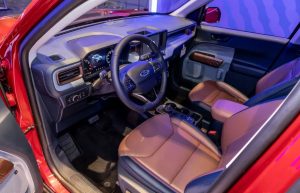
Part of the reason why the Maverick gets such great mileage with either engine is that it’s technically not a truck – as trucks have traditionally been defined. It has the shape, but under the skin, there’s no heavy steel frame onto which the body’s bolted – as is typical for most trucks – and there’s no four-wheel-drive option, as is almost always the case with trucks, as traditionally defined.
The hybrid Maverick is front-wheel-drive, paired up with a CVT automatic.
The Maverick with its optional 2.0 non-hybrid engine – which is paired up with a conventional eight speed automatic – can be either front-drive or all-wheel-drive. The AWD version does not have a truck-type two-speed transfer case and Low range gearing.
If anything, the FWD Maverick (hybrid or not) is the better ticket for snow-driving on paved roads (or driving on wet grass, off-road) than a 2WD – a rear-drive – pick-up like my old Nissan. Which is as inept when it’s slick as Joe Biden is without his cue-card talking points.
FWD – which pulls rather than pushes – also has the traction advantage of the engine’s weight pushing down on the drive wheels – vs. the light-in-the-tail RWD pick-up, which loses grip quickly if not offset by 4WD.
The Mav’s AWD system doesn’t have the geared-down leverage advantage of a 4WD system with a two-speed transfer case but it has the advantage of being able to vary the power split front-to-rear as much as 90 percent in either direction (vs. 50-50) and it’s designed to be engaged on dry as well as wet/snow-covered roads and in the curves.
No axle bind here.
If you need the additional leverage – and physical toughness – a body-on-frame truck with a 4WD system and Low range gearing may suit better. But if not this Ford will fill the bill – without emptying your wallet.
On The Road
There is another big difference between the Maverick and prior small trucks – that arises as a result of the Maverick’s different underthings.
It rides easy.
The axle doesn’t reverb over the ruts because it’s not solid – nor hanging non-independently from a pair of bouncy leaf springs, like the pair underneath my truck and other old trucks.
Instead, all four wheels are independently sprung, allowing each one to deal with road irregularities individually, without transmitting the untoward movements to the axle opposite. In addition to making this truck ride like a comfortable car, it also handles like a car – which my old truck does not.
The Mav’s wheelbase is also much longer 121.1 inches vs. 116.1 for my Nissan) and very little of the bed hangs aft of the rear axle centerline, all of which enhances stability and endows this small truck with the ride feel of a larger truck even though it isn’t appreciably longer than my small truck.
Now, my truck – like other old trucks – has the advantage of ‘60s suspension technology. Its leaf/coil springs are 20-plus-year parts and the solid rear axle will last forever – whereas the MacPherson struts in the Ford will probably need to be swapped out for new ones at some point before then. But until then, you will be enjoying a much less bouncy ride and handling chops that will surprise the hell out of you, if you’re used to how old trucks “handle.”
The Maverick also rides big.
Because it is wider and slightly taller than old compact trucks like my little Nissan, you feel as though you are driving an almost mid-sized truck. Which it is, if you compare the width with the width of what used to be mid-sized trucks (now morphing into almost-full-size trucks). The wider hood that’s ahead of you adds to the sense of substance.
But it’s not so wide – hood-wise ad otherwise – that it makes you feel small. It also doesn’t make the road feel narrow – as most current half-ton trucks do, on account of their width taking up almost all the space in between the double yellow to your left and the white shoulder line, to your right.
It is easy to maneuver the Maverick through tight turns at drive-thru banks and such and it fits readily into almost any parking spot – including garage spots – meant for a car because it’s about the same overall size (and length) as a current mid-sized car.
One area where the Maverick is a lot like most new trucks is its cab/bed configuration – which emphasizes passenger rather than bed space.
It comes as a crew cab only – and only with a four-foot-six-inch bed. This is less bed than my old truck’s six-footer but then my truck is effectively a two-seater. It has a pair of hilarious fold-down jump seats behind the driver and front seat passenger seats that are usable by trained monkeys and very small kids only.
The Ford’s rear seats are usable by me – a six-foot-three dude – whose knees don’t rub up against the backs of the front seats. They are more than useable. They are comfortable and roomy enough for me to be back there for a couple of hours.
With someone else sitting beside me.
The same’s true up front – and it has to do with (again) the width. The Maverick has much more side-to-side as well as legroom than my old truck because it is almost ten inches wider through the hips: 77.9 inches vs. 67.7 for my old rig. This makes a huge difference in interior spaciousness. It makes this “compact” truck feel almost as roomy as full-sized trucks used to feel . . . before they got super-sized.
Another point of similarity – happily – between this Maverick and old trucks like mine is the accessibility of the bed. Or rather, of being able to easily get at whatever you put in the bed. Just reach in and get it. No need for a step ladder. The bed walls aren’t as high as walls of Jericho – as they are in all the new super-sized half-tons and the almost full-sized “mid-size” trucks (like the new Frontier) that render getting at stuff in the bed not easy.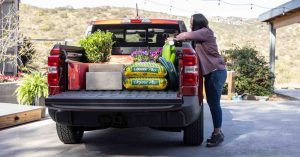
The bed is shorter than the formerly usual six-footer, but it can be extended to functionally six feet by lowering the tailgate – which can be “multi-positioned” to accommodate different types of cargo, as opposed to the usual lay it down or raise it up.
The bed, itself, comes standard with two pre-wired 12 volt/20 amp power sources and you can order it with a pair of 110 volt outlets in addition. My old truck’s bed has none of these handy features. It also has drop-in, rust-enhancing plastic bed liner. The Ford has a sprayed-in liner that doesn’t trap water in between it and the metal bed floor underneath.
There are also numerous places to put things inside the cab, too. Ahead of the rotary knob gear selector, a spot for your phone (with available wireless charging) and house keys, small change, etc. Under the rear seats there are additional places to put other things.
If you put a camper top on the bed, you could put two people back there. With the tailgate down, there’s plenty of room to stretch out for a snooze.
The Rest
There’s another big difference between this truck and old pick-ups like mine. It – the Maverick – comes standard with power windows and AC and a six speaker stereo – plus 42 MPG for less than $20k.
My truck – which came with manual roll-up windows and the AC and stereo extra-cost options – stickered for $12,799 when it was new back in 2002. That’s $20,777 today – without adding the almost $2k more (in today’s Biden Bucks) it cost to add AC and a stereo to the amenities list.
So, the new Maverick stickers for about $3k less in actual cost than what my truck cost when it was new.
It also stickers for about $5k less to start than any other new truck, including Ford’s next-up-in-size Ranger pickup. And easily $10k less than any new half-ton.
It is hard to find a new car that stickers for less than $20k – and this truck does.
It is also the only truck – ever – that uses less gas than any new car you can buy for less than $20k. It is for these reasons exactly the kind of truck Americans could used more of – because it is so much like the trucks Americans used to be able to buy.
And now they can, again.
The Bottom Line
If you’re looking for a truck like they used to make ’em – that’s more for less – well, here you go!
. . .
Got a question about cars, bikes or anything else? Click on the “ask Eric” link and send ’em in! Or email me directly at [email protected] if the @!** “ask Eric” button doesn’t work!
If you like what you’ve found here please consider supporting EPautos.
We depend on you to keep the wheels turning!
Our donate button is here.
If you prefer not to use PayPal, our mailing address is:
EPautos
721 Hummingbird Lane SE
Copper Hill, VA 24079
PS: Get an EPautos magnet or sticker or coaster in return for a $20 or more one-time donation or a $10 or more monthly recurring donation. (Please be sure to tell us you want a magnet or sticker or coaster – and also, provide an address, so we know where to mail the thing!)
My eBook about car buying (new and used) is also available for your favorite price – free! Click here. If that fails, email me at [email protected] and I will send you a copy directly!




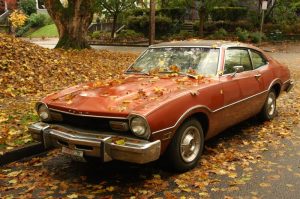
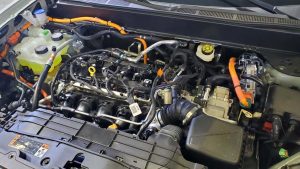
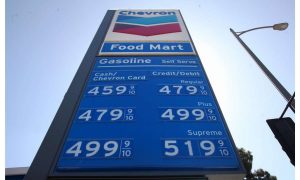
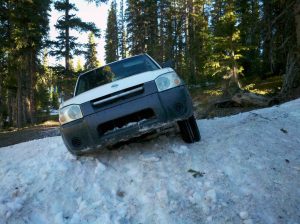
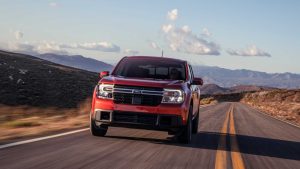
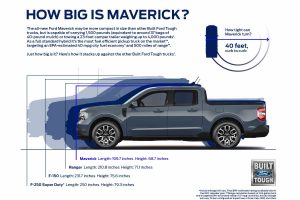

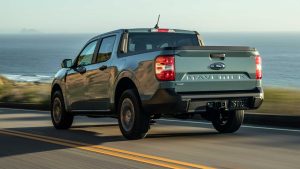








“The Maverick is not a ‘70s spin-off of the Pinto/Mustang II – as the original Maverick was.”
Ahem. The original Ford Maverick is of the Ford Falcon/Mustang line. It shares its basic design and parts along with a lot of mix and match parts. Parts that work in either car. Want front disc brakes in your ’65-’73 Mustang on the cheap? Take them from ’75-’77 Maverick. Also Granada, the Granada was again the same basic design. Based off the 4 door Maverick.
From what I understand, Mavericks are virtually sold out for the rest of this model year and have been for months. I live in Metro Atlanta with lots of big Ford dealers around and lots of vehicles on the road. I have yet to see a Maverick in the wild. My wife may have some interest in buying a Maverick in a year or two, but the thought of buying a vehicle, either new or used, is a big joke right now.
I wonder how they manage the 4000 lbs towing capacity. Every unibody vehicle I’ve ever heard of was capped at 2000 lbs. More weight might push some of that gas mileage down. Also, I wonder why it took this long for a maker to come up with the idea of selling a unibody “truck.” Can’t imagine what the highway MPG is with this thing pulling its max capacity with that turbo spooling up to 12 psi just to keep the thing at 65.
The honda ridgeline is unibody, started selling in the 2006 model year. Tows 4500lbs with the honda j series v6. Unibody trucks are far from a new idea.
I wonder how difficult it would be to take out the back seat and convert it to “secure storage?” With the current lack of respect for private property in cities I’m not so sure I’d want to keep anything in an open bed overnight.
‘The Mav’s wheelbase is also much longer, 121.1 inches vs. 116.1 for my Nissan.’ — eric
Meaning a 6-foot bed would easily fit, if the Mav offered an extended 2-door cab as the compact Nissan and Toyota pickups did.
In a 6-foot bed, 4’x8′ sheets can be tilted down toward the front, with 2 feet hanging over the tailgate. That would be a dicey proposition with a 4-1/2-foot bed, where the tailgate fulcrum would function more like a seesaw. WHOOOPS — there goes muh plywood, receding like roadkill in the rearview mirror.
I concur with several other commenters that the Mav is likely to be a smash hit, as the only facsimile of long-lost compact pickups on the market. If only they’d offer a shorter cab + longer bed, and something besides an eye-glazing, soul-destroying CVT.
Completely agree, Jim –
Not everyone needs a crew cab, four full-sized doors and room for five people. I rarely need to have room for more than one passenger, so my little Nissan suits perfectly. As you note, the six foot bed is – for me – far more useful than the extra doors/seats. I think Ford would sell more if they offered the regular cab/six-foot bed – but then this truck would be a real threat to the Ranger and F-150!
Eric,
You know, I giggled a bit when you said it came with a 2.0L turbo engine as an power upgrade. The ubiquitous 2.0L turbo: soon to be in everything from lawn-mowers to semi-trucks…
Makes me wonder what would happen if I somehow put a turbo on my S10’s 2.2L engine.
You begin to read a few words in another article here and before you know it, you’ve read them all.
The Maverick will sell like hotcakes at every diner, drive-in and dive out there in America.
You gotta respect what can be done with automobiles, can’t really do it from scratch, you need know-how and knowledge to build manufacturing plants and manufacture millions of vehicles that last for years.
Hard core industrialists create the means to do what can be done, gather the resources, and maintain the means to continue the process. They know it can be done, been done for centuries. Been there, done that.
Massey-Ferguson manufactures tractors and combines because they know the demand is there and the supply can be achieved by making one at a time. Massey-Ferguson means business.
Monsanto originated in Muscatine, Iowa.
Mark Twain lived there for a while. His parents lived there, Muscatine is known for its button factories. Buttons were made from fresh water clams along the Mississippi River way back when in the late 1880’s. So many buttons made from Mississippi River clams, the world button market crashed. A few species were extinct after the clam digging ended.
Got to figure out what to do, have to survive against all odds. You gotta get it while you can, it won’t be long and it will all be gone. You’ll be on US Highway 61 if you get to Muscatine someday one day.
You gotta get it while you can – Steve Goodman
Oodles of clam shell pieces in every yard. Buttons rule, totally gone wild in Muscatine.
Bandag originated there along with Kent Industries.
The Quad Cities are a few miles north, home of John Deere.
The Front Range of the Rockies in Colorado will probably be crawling with Mavericks.
Your teaser about the Maverick, versus your 2002 Nissan, made me fondly remember my 1989 Nissan 4×2: standard cab, z24 engine, 5 speed, base configuration (AM/FM only, and no A/C–which really sucked in Texas).
I’ve checked the nationwide ads for pre-1996 Nissans, and the prices range from more than they cost new, down to fairly reasonable.
In 1989, I paid $7,000 to the bank that repo’d that 1989 truck from the original buyer. In 2022 dollars, that’s $16,200: less than the new Maverick, but with a manual, and I regularly got 25+mpg on the highway thanks to the advantage of knowing how to drive with a third pedal, versus a modern CVT.
Manual window cranks don’t bother me at all, and modern all-electric seats tend to piss me off, especially if all I want to do is park and lean back for a nap.
I bought that 1989 Nissan right after my Army service, and used it to move my wife and I several times as we bounced around. The low bed height was really handy when I moved her piano all by myself (twice!), using nothing more than milk crates and ingenuity and an understanding of mechanical advantage.
Hi Kevin,
I love my ’02 also – and previously had a ’98, essentially the same configuration. Great little trucks! The Mav is similar in a number of ways, emotionally – though also a very different “truck,” too. I like the size – and I love the height, which is as trucks used to be. I do wish a manual version were available but 42 MPG is pretty hefty compensation – and for under $20k, that’s a deal, too!
I’m guessing this isn’t a plug-in hybrid? Add a few extra KW’s of batteries and a charging socket and that city mileage might get even better.
Bummer you can’t get a regular cab and longer bed. But Ford is gonna sell a lot of them. Seems like what they are will work for many people. It would be an option over a regular crossover too. Especially since the mileage is this good and you can get one that isn’t too loaded to keep the price down.
Wonder what kind of mileage it could get if the hybrid could be paired with a little diesel (of course if it was possible it wouldn’t be as affordable to buy). Too bad we will never know.
Rich,
“Bummer you can’t get a regular cab and longer bed.”
Yep, that’s my primary complaint. Manual would be nice, too, especially for when the battery goes dead. Of course, you probably can’t push-start a hybrid.
“Wonder what kind of mileage it could get if the hybrid could be paired with a little diesel (of course if it was possible it wouldn’t be as affordable to buy).”
I think that diesel hybrids would be quite the item, and as Eric and others have said, might push the mileage into the HUNDREDS of MPGs. But, like you said, too bad we’ll never know.
That one can buy this for $20k appears to be a myth though. It doesn’t appear that any new ones are available and used prices seem to be $35k
Like most base model vehicles, it would probably have to be ordered. Same thing with any pickup of any brand. You never see one in stock anywhere that is the actual base model.
Hi Mister,
One can buy the Mav for $20k; the difficulty lies in finding a base model on the lot. It’s a common problem – a common scam, actually. Dealers will order/stock only “loaded” iterations of whatever they sell and count on being able to up-sell people interested n the base trim. There are some other factors at work lately as well. This may be worth doing a stand-alone article about as many have brought the subject up…
On a radio talk show people were calling in to say that dealers were up charging by $10,000.
I brought home 2000lbs of stone today from the garden center in my truck. I get that’s not what the Maverick is for, but I’m left wondering, what is it for?
It is a car with a too short pickup bed. Where’s my El Camino?
I think Eric’s Frontier is more useful since it has a usable bed.
Hi Dan,
This Mav (I still have the press unit) is very close to comparable in capabilities and in some respects, superior, to my ’02 Frontier’s. Its bed is slightly smaller, but that can be crutched with an extender. And it’s a bit wider, which compensates some, too. There is no contest as far as interior room – the Mav is vastly more capable for carrying passengers – and its mileage is also so much higher it’s hardly worth comparing.
My only worry – with the hybrid version – is whether the battery (and CVT) will fail/need to be replaced before 20 years or so. I use that figure because my truck is 20 – and so far has needed nothing beyond tires, pads, oil and filter, etc.
Dan! Surely you know what li’l cars with lidless trunks are for! They are for hauling around soccer balls and other outdoorsy products with huge logos so that others know you living a modern active lifestyle! Gotta have that crew cab too, ’cause massa don’t allow you to put the sprog’s car seats in the front seat when haulin’ ’em to endless organized “activities” or to visit dey baby-daddies (Ya get a separate door for each sprog, that ways no one gets confused “Little Otteaux is behind door number 3. Now I must go bring little Leighsuh -behind door number 4- to her daddy’s condo”). You could carry a bike or two, too- if they’re not too heavy, and fold up..or if you buy a carrier for the rear (Check reviews and forums so’s ya get the one with the currently favored logo).
Seats? Look thin and that seam running the length of the bottom side bolsters won’t be so welcome as it eats into your thighs after an hour on the road. See also Grand Cherokee and GMC Acadia for this annoying design. Five minutes into an Acadia test drive nixed that purchase plan due to the lame seat design.
There is one benefit to the crew cab layout other than being able to carry more passengers that many overlook. If you’re going to use it as a work truck the rear of the cab can be easily used as big weatherproof lockable tool box. I have a ridgeline and can carry just about everything needed for a remote job as well as an emergency kit to keep the trucklet going. Single cab owners often have to add a toolbox to the bed that decreases bed length anyway. It’s a bit disappointing that the maverick lacks an under bed trunk that the ridgeline pioneered. I could understand if the batteries were back there but the non hybrid lacks this feature as well. In any case fjords not going to be able to build enough of these things and everybody else is going to want in on the action. Good times ahead for small trucks!
Hi Truck,
You raise and excellent point. I’m generally forced to put my stuff in the bed of my ’02 Frontier because there’s no enough space inside the regular cab for more than myself!
I really like this Mav – which I didn’t expect to. The mileage – and the price – are huge sells. I agree with you – they are going to sell a lot of these…
If you can get one. I’ve looked high and low throughout the whole state of Florida, cuz I’d really like to check it out. Seems like it might suit my needs now that I’m old and don’t need a serious truck anymore, and I really like the mileage compared to my current truck. Unfortunately, not a single dealer within 200 miles of me has one in stock. Lots of them show inventory on their website, but always turns out they’re “in transit” and not on the lot
Hi Floriduh,
Yup; it’s a general problem, too. New car inventory is almost nil in my area, irrespective of make/model. On the upside, this may give buyers some leverage in that they can condition a sale – which dealers are likely hungry for – on ordering exactly what they want and nothing else. The downside is having to possibly wait months to get it.
“If you’re looking for a truck like they used to make ’em – that’s more for less – well, here you go!”
Precisely why I ordered one, BUT with one caveat: it also doubles as a car. Most Maverick reviews focus on how much of a “truck” it is — or isn’t. What is often ignored it that it is really a cross between a truck and a car. Ford not only quit making compact Ranger in 2011, it has since quit making sedans. A customer (like me!) who would normally own one of the old Rangers AND a Focus or Fusion was SOL for the past decade.
The Maverick effectively combines both vehicle types — for one price.
Like most people who ordered, my truck is delayed until probably early fall. I ordered it without being able to drive one. So I am curious if Eric can provide more detail on driver comfort, acceleration, and cabin noise with the hybrid powertrain.
Thanks!
That’s the most excited review I’ve seen you do. You going to get one?
It almost makes me want to get one vs my big truck. Will it hold two std. dirtbikes in the back with the tailgate down? Assume about 80″+ plus from the front wheel to the rear axle.
Yup, but it doesn’t look right. Looks like the tailgate is bending in some of these pics, but it couldn’t be an optical illusion.
https://www.mavericktruckclub.com/forum/threads/maverick-bed-fits-two-dirtbike-motorcycles-honda-450-and-a-ktm-300.3385/
“No two-door/regular cab version is available, so the only bed that’s available is less than five feet long.
No manual transmission is available.
4WD isn’t available. ”
Those things are truly “not so good”, especially the lack of a two-door, longer bed version. But all of that would be desirable for driving “in the sticks”
The price is, however, refreshing. People are selling 1990s-era Tacomas for nearly this much.
The Maverick’s price is possible thanks to Hecho en Mexico. Even Toyota has had issues trying to transition Tacoma production south of the border, and that vehicle doesn’t have nearly the complexity of Ford’s hybrid drive train and CVT.
Makes perfect sense. Just can’t seem to keep jobs here, can we?
Hi Levi,
Yup. It’s a lethal (to prosperity) synergy. Make it so expensive to manufacture things here – via regulations – that companies move their manufacturing operations away from here. The people here lose their jobs. The people there get them – making what used to be made here. Then what is made there is shipped back here – where it is sold to people who can no longer afford to buy it.